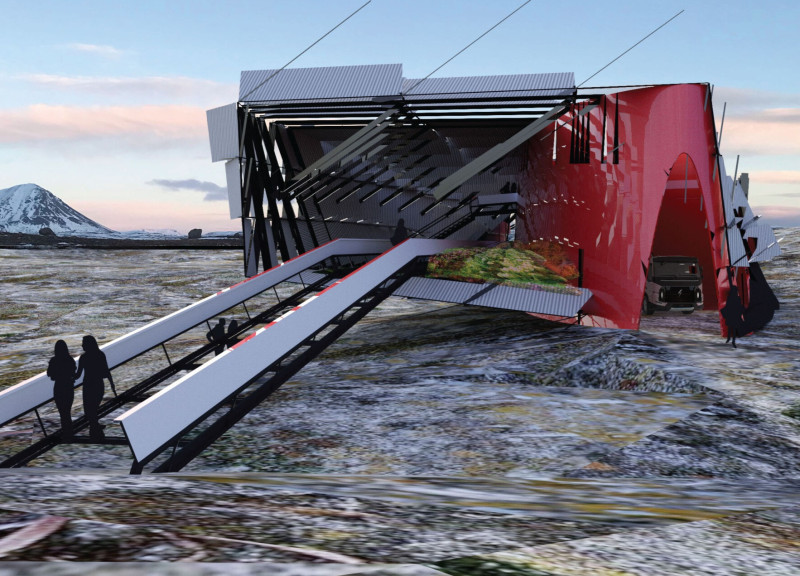5 key facts about this project
The Tini Vélin, commonly known as the Tin Machine, is located in the Mývatn region of North Iceland. It serves two main purposes: functioning as a recycling plant and acting as a community center. The design emphasizes a close relationship with nature, embodying the principles of a circular economy while promoting community engagement.
Concept and Form
The idea behind the Tini Vélin draws inspiration from organic shapes found in nature, resembling a beached whale or the structure of a Viking ship. This thoughtful design minimizes the impact on the land, preserving local wildlife habitats. Its shape is intended to offer views of Lake Mývatn and the Huerfjall Volcano, ensuring that the building aligns with and respects its surroundings.
Functionality and Spatial Organization
The Tini Vélin is organized into three levels, each with designated functions. The base level is practical in design, containing maintenance shops, storage areas, and resource collection zones. This setup strongly supports the building’s objectives of recycling and sustainability.
The first level promotes community interaction, featuring a kitchen, greenhouse, and spaces for educational and recreational activities. These areas encourage social engagement, while the second level includes an educational zone, a music room, and a café, further establishing the building as a center for community activities.
Materiality and Sustainability
The structure employs a tensegrity system, which consists of a network of outriggers and struts. This lightweight construction method is efficient and minimizes the overall footprint. A key feature of the building is its active skin, which helps manage light and heat, reducing the need for mechanical heating and cooling systems.
Sustainability is central to the design, with elements that utilize hydroelectric and geothermal energy. The gray water recycling system emphasizes resource efficiency, while organic waste is composted to create rich soil for local community gardens.
Natural Light and Interaction
Natural light plays an important role in the Tini Vélin. Large openings throughout the building allow daylight to enter the interior, contributing to a positive atmosphere and enhancing energy efficiency. The responsive exterior supports adaptable control of light and temperature, responding to local weather conditions and improving the comfort of those inside.
The Tini Vélin’s unique form and design details foster an engaging environment. It demonstrates how thoughtful architecture can connect with the landscape while serving the needs of the community.






















































